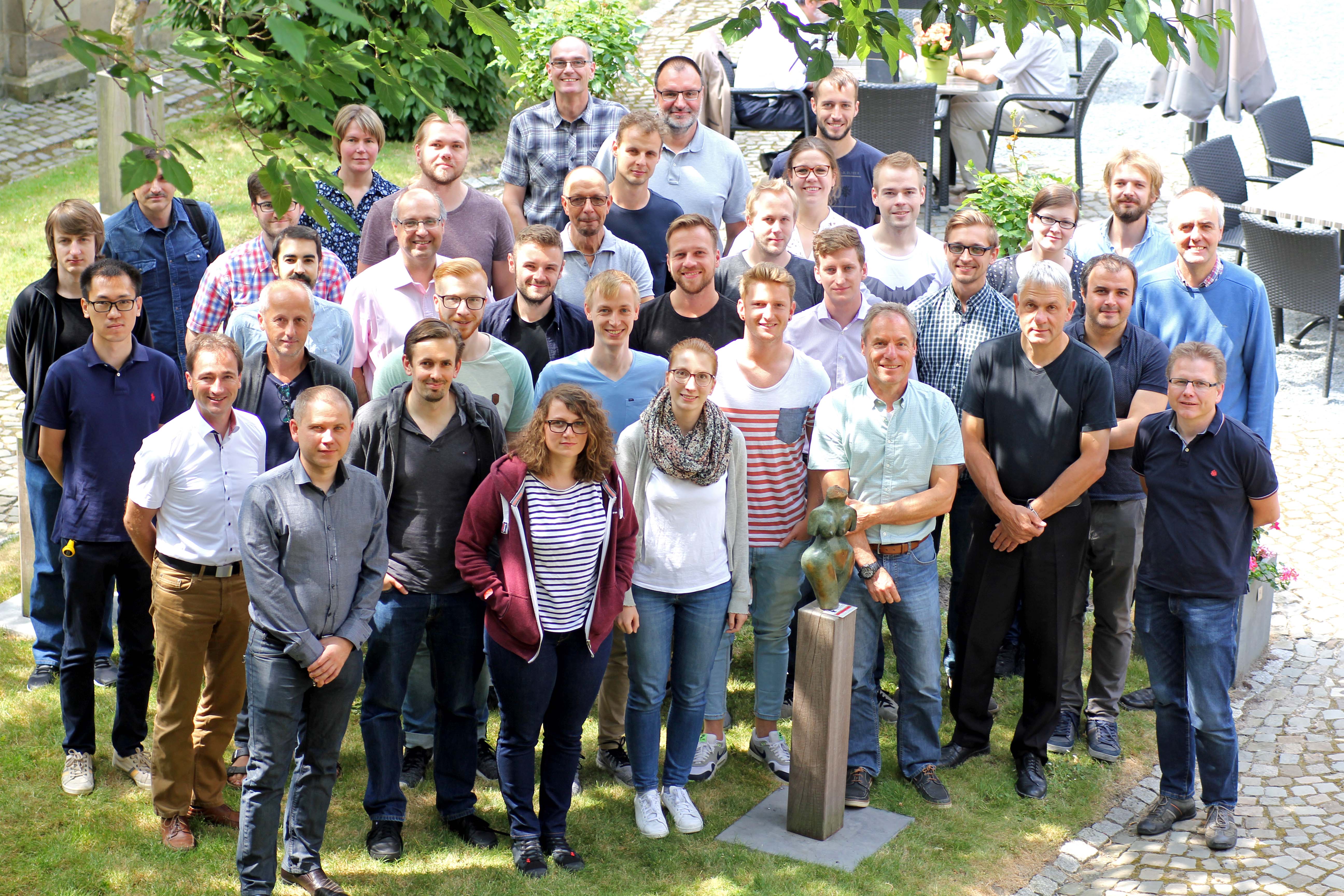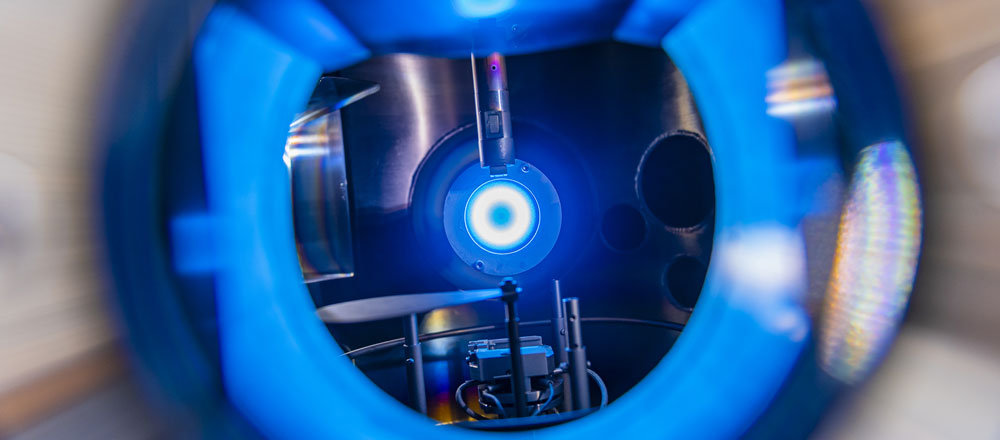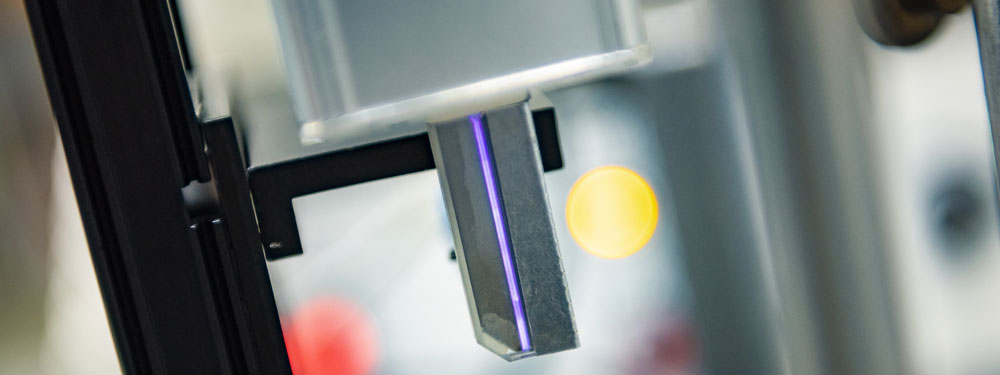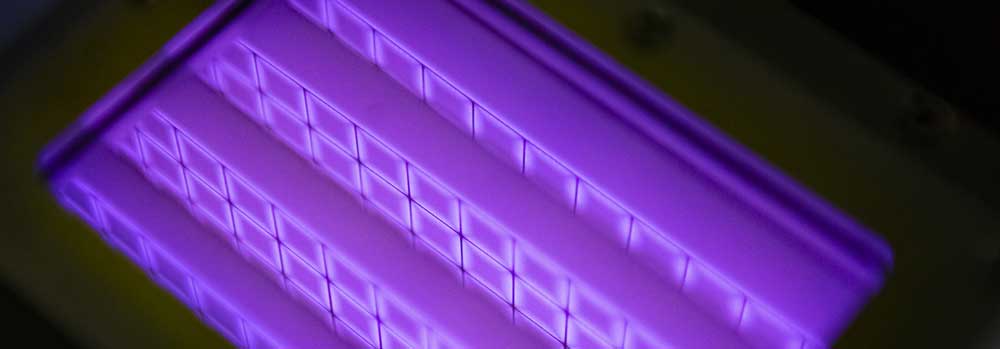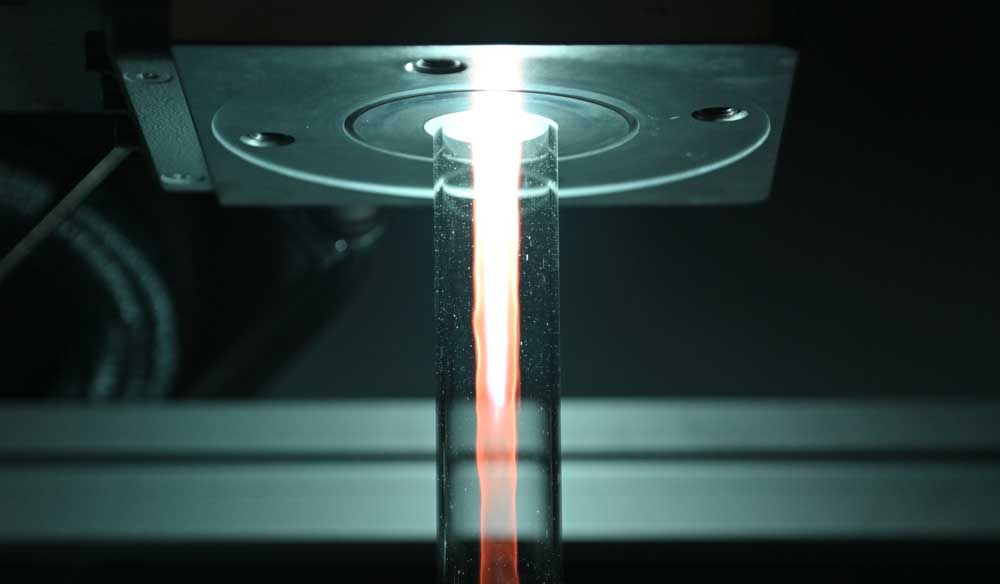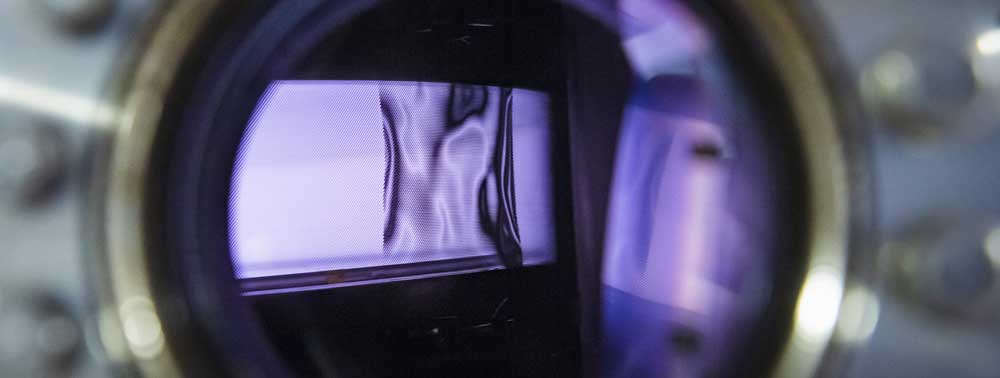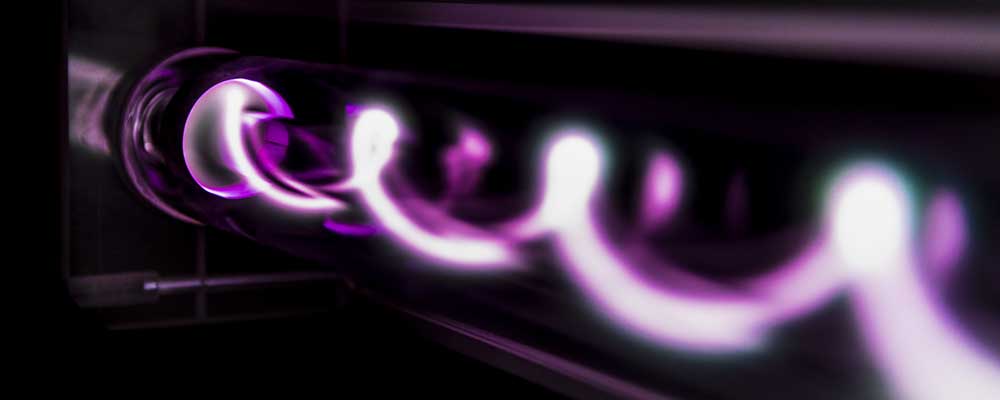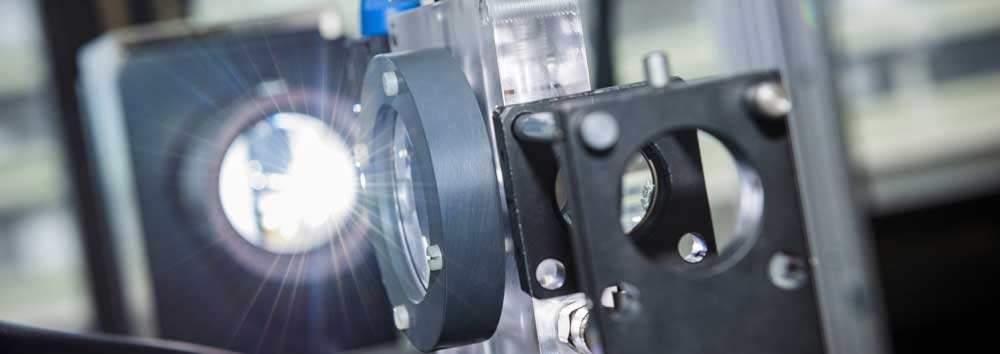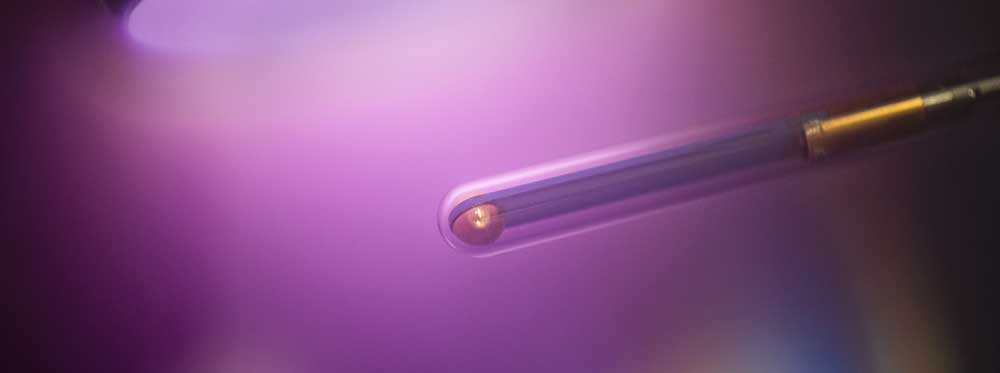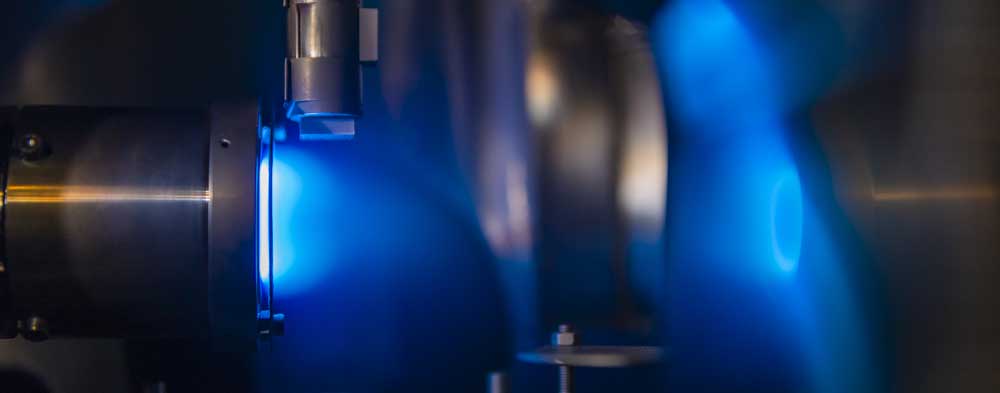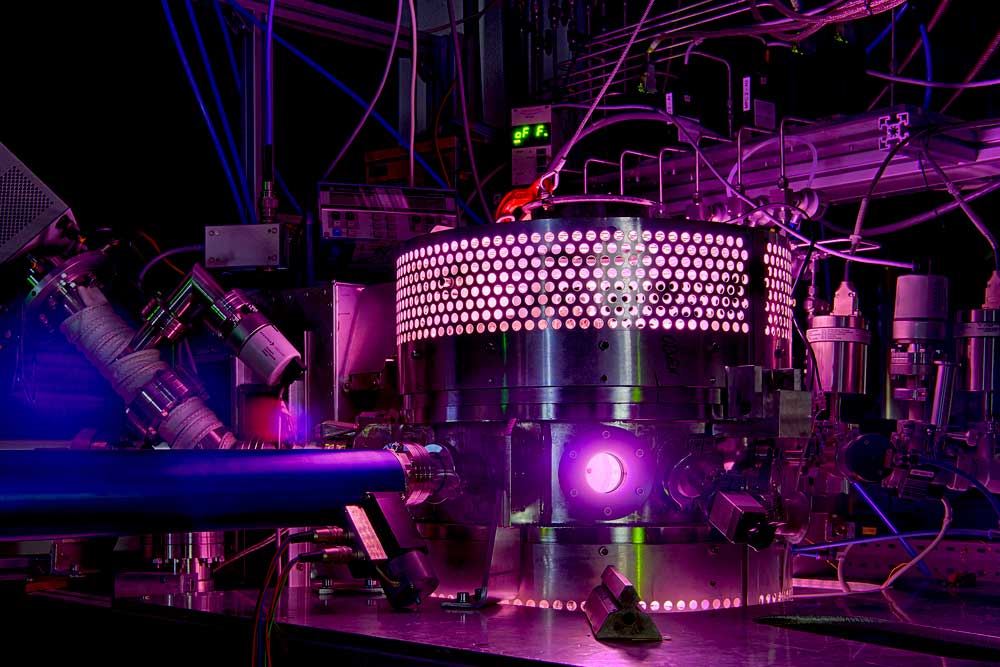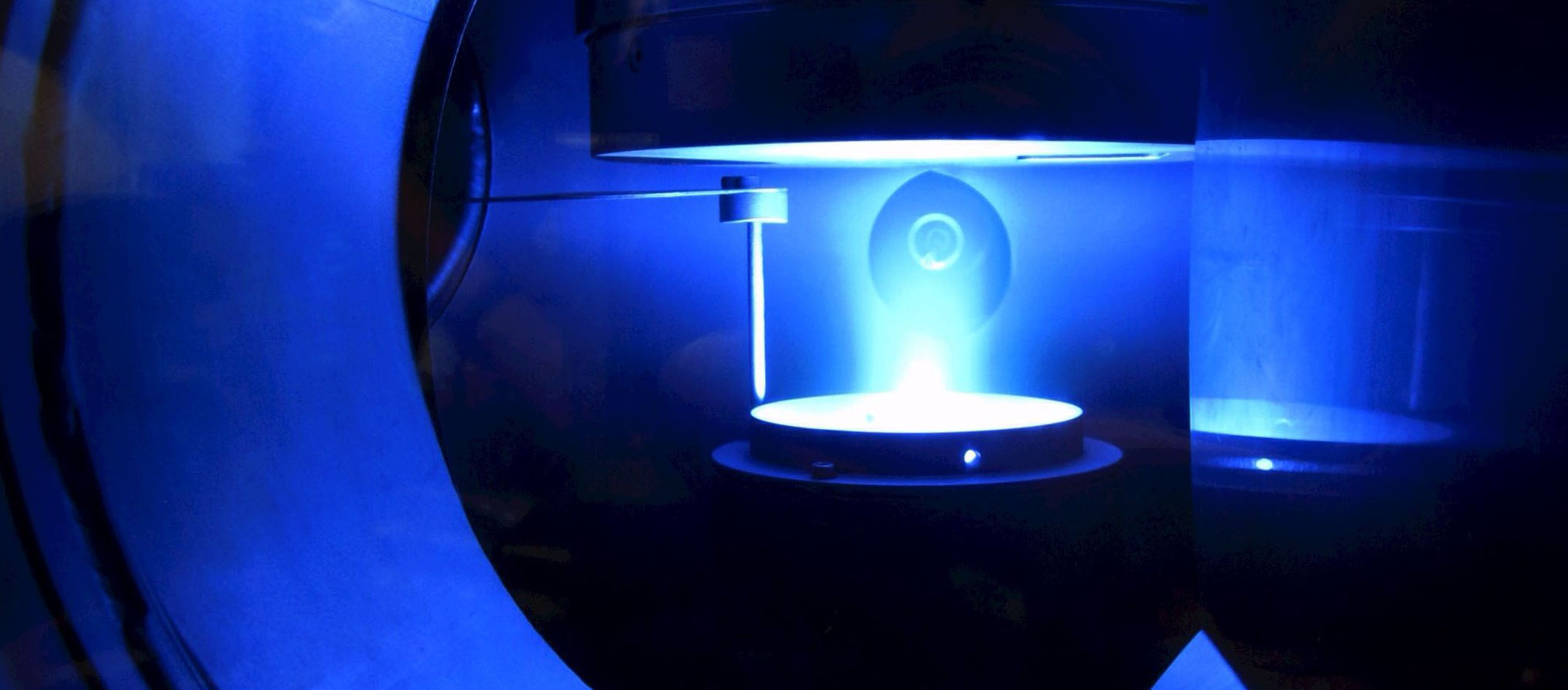CRC 1316: Transient atmospheric plasmas - from plasmas to liquids to solids
Research Goal
Non-equilibrium processes are the basis of a multitude of phenomena in nature such as transport, excitation of atoms and molecules and de-excitation and dissipation at surfaces. The non-equilibrium character of plasmas is especially pronounced due to the high energy density in these systems and the very selective excitation of, for example, only the electrons. If these plasmas are brought into contact with solids or liquids, the non-equilibrium character can be transferred to other states of matter. An excellent example are plasma chemistry processes that are directly coupled to catalytically active surfaces.
The use of non-equilibrium atmospheric pressure plasmas is most interesting since they can most easily be combined with standard chemical processes. The non-equilibrium character of these plasmas can be controlled by large gas flows or by short pulsed excitation assuring strong cooling mechanisms. Thereby, a huge variety of desired plasma chemistries or emission patterns can be adjusted following an empirical strategy. However, any further progress is hampered by the lack of a fundamental understanding of those discharges and their interaction with fluid and solid Interfaces.
The Collaborative Research Centre (CRC) 1316 “Transient atmospheric plasmas – from plasmas to liquids to solids” addresses these research questions by combining expertise in plasma physics, surface physics, chemistry, biotechnology, and engineering. This CRC focuses on transient atmospheric plasmas at varying spatial and temporal scales for the nanostructuring and activation of catalytic surfaces, for the coupling to catalysis and biocatalysis, as well as for electrochemical processes. Due to the strong interaction between these plasmas and the confining interfaces, special in-situ, real-time, and in-operando methods will be employed. The research program follows three consecutive phases with reaching a basic understanding at the beginning to the optimum integration of plasma and active surface, until the up-scaling of these plasmas. The CRC 1316 seeks optimal solutions for systems for energy conversion (solar fuels, CO2 harvesting, photocatalysis), to health (removal of volatile organic compounds from air streams), for biotechnology (plasma-driven biocatalysis), and for technical chemistry (bottom-up synthesis from small molecules to valuable chemicals).
Further information
- Website SBF 1316 https://sfb1316.rub.de
Spokesperson
Prof. Dr. Achim von Keudell
Experimental Physics II
Physics of Reactive Plasmas
Ruhr-Universität Bochum
Universitätsstraße 150
44801 Bochum
Tel.: +49 (0) 234 - 32 23680
Fax: +49 (0) 234 - 32 14171
Deputy Spokesperson
Prof. Dr. Martin Muhler
Industrial Redox Catalysis
Ruhr-Universität Bochum
Universitätsstraße 150
44801 Bochum
Tel.: +49 (0) 234 - 32 28754
Fax: +49 (0) 234 - 32 14115
